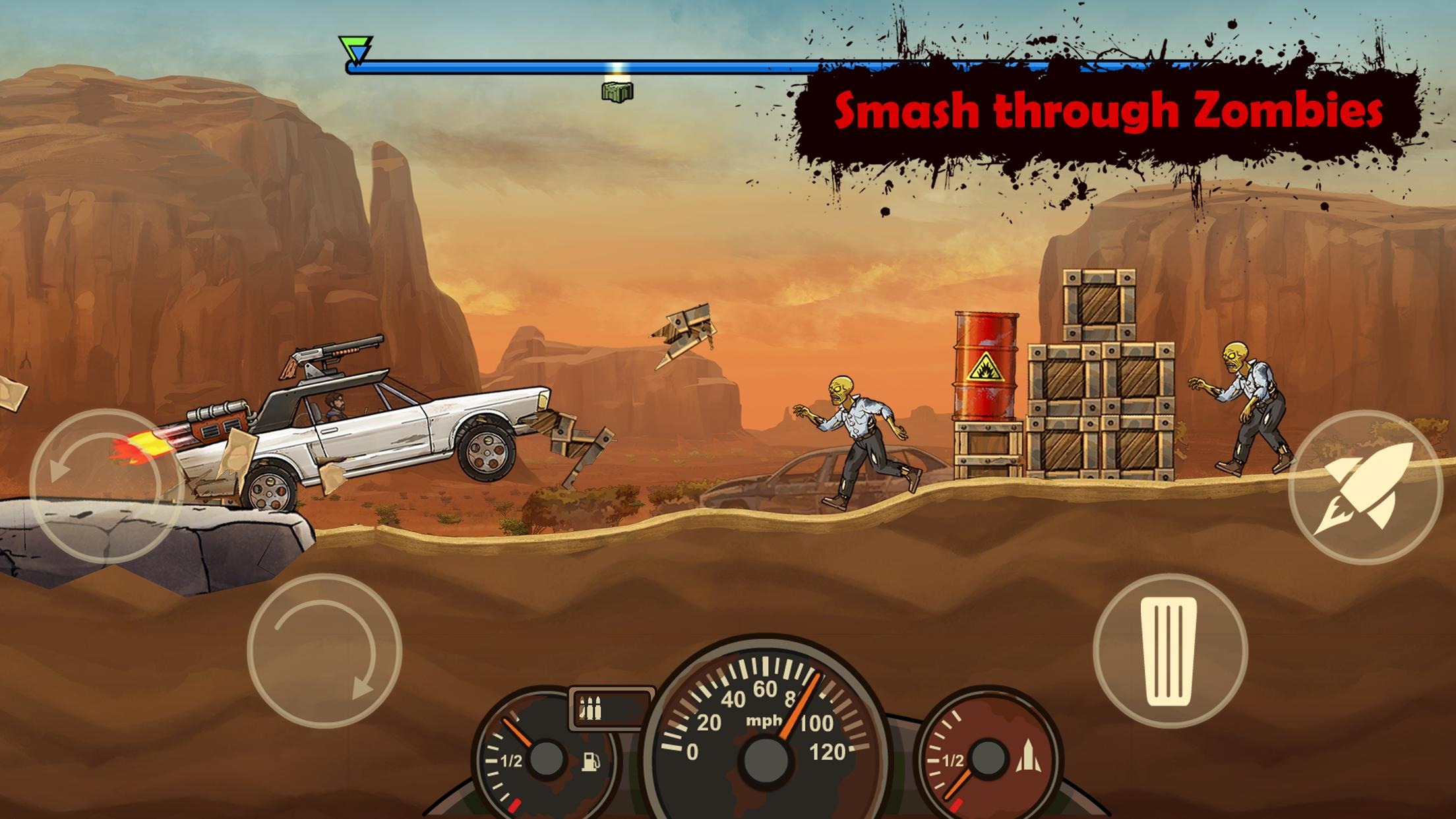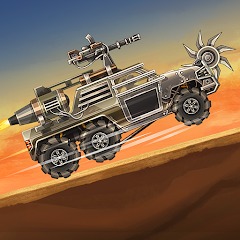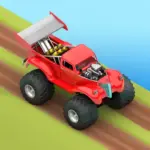Earn to Die Rogue IPA takes the rubber-burning fantasy of plowing through the undead and refines it into a compact roguelite-equal parts scrapyard tinkering and “one more run” momentum. It’s a reimagining of a cult favorite formula, swapping linear upgrades for modular improvisation and risk-reward choices.
This article explores how the game’s loop, mechanics, and atmosphere fuse into a focused, replayable ride. Whether you’re a series veteran or a newcomer to post-apocalyptic horsepower, here’s what revs beneath the hood.
A New Route Through the Apocalypse: Introducing Earn to Die Rogue
What’s new under the hood
Earn to Die Rogue reframes the series’ sideways sprint into a run-based, roguelite odyssey. Runs are short, punchy, and frequently surprising-routes branch, hazards rotate, and loot tables shuffle, demanding snap decisions and mechanical adaptability. Instead of a single, linear upgrade path, each attempt becomes a unique build experiment.
The premise is familiar: reach the extraction point before fuel, armor, or luck runs out. What’s different is how the game treats failure. A totaled rig isn’t the end; it’s a resource. Scrap salvaged from each expedition trickles into meta upgrades, new vehicle shells, and unlockable card pools that alter future runs. The apocalypse becomes a workshop.
Rogue leans into bite-sized intensity. Levels feel like stitched-together gauntlets-funnels of zombies, jump puzzles, and barricade pinches-designed for quick mastery and long-tail depth. The result is a pick-up-and-play structure with enough systemic variance to stay fresh across many late-night sessions.
The Run-Loot-Upgrade Loop: How the Roguelite Structure Works
From first crank to final crash
Each run starts modestly: a clattering bucket of bolts, a dash of fuel, and a map pocked with branching opportunities. You’ll break crates, mash through undead clusters, and loot mods and cards that instantly alter your car’s behavior-more torque, a spiked bumper, a jury-rigged turret. The drive is a tug-of-war between speed and caution, because reckless momentum can unlock shortcuts while also shredding your chassis.
Survivor caches and garages serve as mid-run pause points, letting you swap gear, repair panels, or reroute toward high-risk, high-reward paths. Temporary boons (overcharged nitro, bullet-denting armor) stack with semi-permanent upgrades to create quirky, powerful synergies that define the feel of a run. Failures teach track patterns and enemy tells; successes unlock new problems to solve.
Between runs, scrap feeds a meta progression that increases your baseline power and diversifies your future choices. You might widen your card pool, unlock a heavier chassis, or improve shop odds. Crucially, no run is wasted: even a short-lived attempt usually nets enough salvage to make the next sprint meaningfully different.
| Loop Stage | Key Decision | Risk | Reward |
|---|---|---|---|
| Start | Route A vs. Route B | Unknown hazards | Early power spike |
| Mid | Repair or push on | Armor break | Better loot |
| Late | Boss gate or detour | Run loss | Blueprint unlock |
Wheels, Weapons, and Workarounds: Core Mechanics and Combat
Physics, traction, and timing
At its core, Rogue remains a 2D physics-driven racer-brawler. Weight matters. So do traction, suspension, and angle control. Mastery comes from modulating throttle and boost-landing flat to preserve momentum, feathering the gas to climb debris, and safeguarding your undercarriage from spike strips. The best runs look reckless but are quietly choreographed.
Combat is contact-first. A reinforced bumper or spinning saw can paste a zombie wave before they latch on, while roof turrets and side-mounted guns chew through ranged threats. Ammo is scarce enough to encourage precision over spray, and cooldown windows invite positional play-vaulting off a ramp to crush a nest saves bullets and armor alike.
Levels stitch together micro-challenges: collapsing scaffolds that reward speed, sludge pits that demand torque, and barricade stacks that tempt nitro-but punish mistiming. Boss encounters are puzzle-brawls, usually solved by exploiting tells and terrain geometry, not just raw DPS.
| Vehicle | Role | Best Mod Pairing |
|---|---|---|
| Buggy | Agile starter | Light armor + nitro regen |
| Pickup | Balanced bruiser | Ram grill + turret mount |
| Van | Cargo tank | Reinforced suspension + saw |
| Muscle | High torque | Spike tires + overdrive |
- Tip: Use terrain to finish enemies; it saves ammo and repairs.
- Tip: Preserve nitro for vertical checks or boss gates.
- Tip: Mid-air roll control prevents crippling nose-dives.
Scrap to Strength: Cards, Mods, and Meta Progression
Building a run, building a roster
Cards act like modular perks that slot onto your vehicle: damage spikes on low health, fuel refunds on kill streaks, or traction boosts on mud. They’re drafted during runs, and your unlocked pool shapes what you’ll see, creating long-term identity for your account. Limited duplicates nudge variety over repetition.
Mods are tangible hardware-rams, tires, turrets, armor plates-each with trade-offs in weight, handling, and durability. Stacking cards with synergistic mods is where Rogue sings. A nitro-economy build feels entirely different from a melee-shredder or a turret-centric run, and learning when to pivot is part of the mastery.
The meta layer unlocks new vehicles, expands shop inventories, improves repair efficiency, and tweaks card rarity odds. Progress is steady but measured; power creeps horizontally, enriching options more than trivializing earlier challenges. It’s a loop designed to keep runs tense while rewarding experimentation.
| Card | Effect | Pairs With |
|---|---|---|
| Grease Monkey | Small repair on checkpoint | Heavy chassis |
| Octane Echo | Nitro refund on kill | Spike bumper |
| Mud Maestro | Traction + in sludge | All-terrain tires |
| Salvage Sense | More scrap from crates | Shop rerolls |
Pixel Grit and Diesel Drums: Visuals, Audio, and Atmosphere
Sights and sounds of the wasteland
Rogue’s presentation leans into chunky pixel grit: cracked asphalt, ribcage skylines, and vehicles cobbled from scrapyard parts. The animation has tactile snap-suspension flexes, bumpers bend, and enemy hit reactions sell the heft of collision. Weather filters and dust plumes add cinematic grime without sacrificing clarity.
The soundtrack hums with diesel-thick percussion and twangy, post-industrial riffs. It’s beat-forward, pushing cadence on long straights and punctuating boss fights with heavier motifs. Audio cues are readable and functional-zombie screeches telegraph latch attempts, metal groans warn of imminent armor failure, and nitro’s rising whine begs restraint.
UI is clean and purpose-built: card picks read at a glance, damage indicators avoid clutter, and route signage communicates branching choices without pausing the action. The aesthetic is cohesive-junkyard poetry rather than polished chrome-serving tension as much as spectacle.
| Element | Style Note | Impact |
|---|---|---|
| Pixel Art | High contrast | Clear readability |
| FX | Dust, sparks, oil | Tactile feedback |
| Music | Industrial rock | Momentum cues |
| UI | Minimal labels | Faster decisions |
Grinding Gears: Difficulty, Monetization, and the Player Experience
Fair fights and friction
The difficulty curve opens generous and tightens quickly, hinging on resource triage: armor vs. fuel vs. ammo. Losses usually feel legible-misjudged jumps, overaggressive boosts, or greedy looting-and that clarity keeps retries satisfying. Enemy and hazard escalation introduces new checks rather than simple stat walls.
On mobile platforms, games of this style commonly use light free-to-play monetization such as ad-supported revives, optional cosmetic packs, or time-saver bundles. The healthiest balance keeps purchases convenience-oriented, not mandatory, and maintains a viable grind path for purely free play. Player goodwill hinges on transparent odds and respectful pacing.
The net experience is a compact, replayable loop: quick runs, meaningful decisions, and enough systemic variance to sustain mastery. Veterans will chase synergy-driven high rolls; newcomers can lean on meta upgrades to soften rough edges. When it works, you’ll look up after “one more try” and realize you’ve tuned a junker into a legend.
- Best for: Run-based tinkerers, physics racer fans, zombie-smash enjoyers.
- Session length: 5-15 minutes per run, longer with late-game routes.
- Skill emphasis: Throttle control, route reading, build synergy.
Conclusion
Download Earn to Die Rogue IPA For iOS trades a straight road for a braided one, where every detour is a design choice. Its roguelite bones, modular upgrades, and punchy presentation make for a wasteland that’s as much workshop as warzone. If tuning, testing, and thriving under pressure sound like your fuel, this engine’s ready to roar.








Leave a Comment